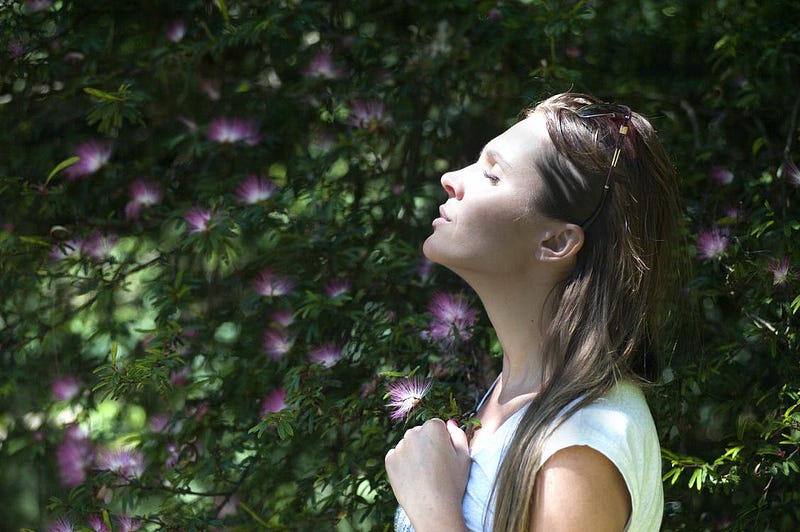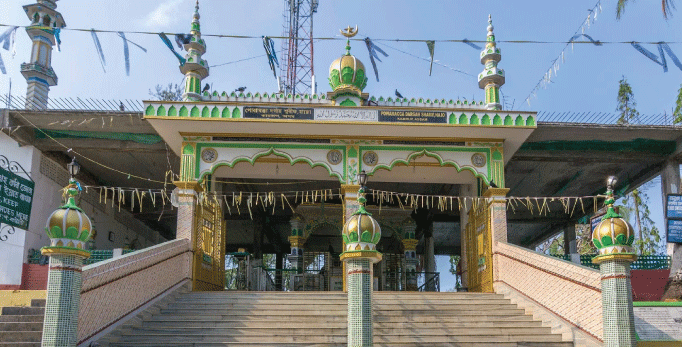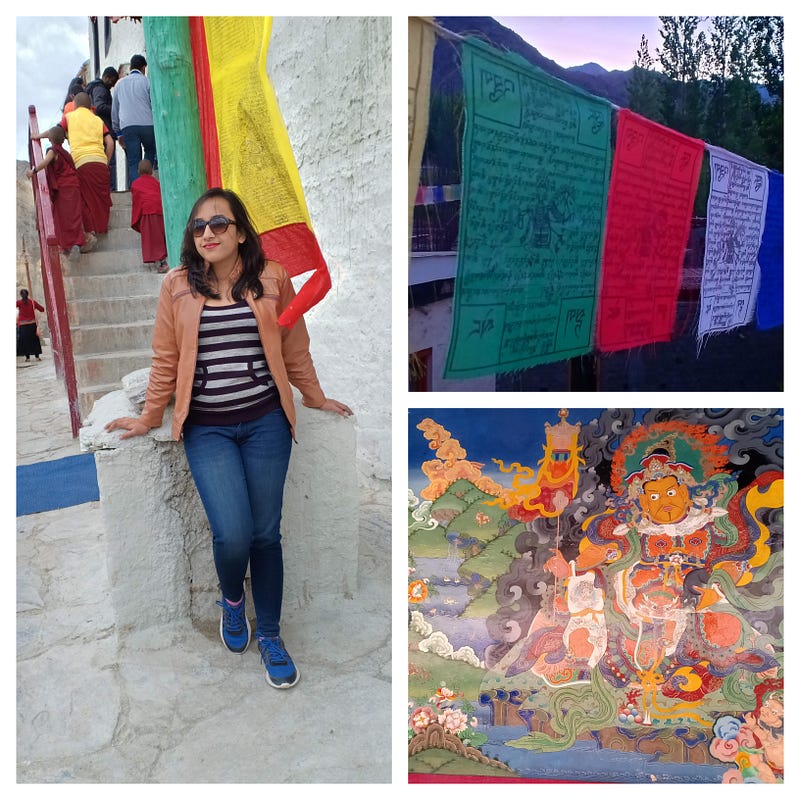3 Religions, 3 Days, 3 Life-Changing Lessons
A Muslim Mosque, a Buddhist Monastery, and a Sikh Gurudwara might not be as different from each other as you’d think.

A Muslim Mosque, a Buddhist Monastery, and a Sikh Gurudwara might not be as different from each other as you’d think.
I live in India — the melting pot of various cultures and religions. A few days ago, I visited three places of worship of three different religions. This article is about how these visits changed my life.
I was born and raised a Hindu, but if you asked me what religion I practice today, I’d tell you I’m a humanist. I believe humans have everything they need to achieve peace and contentment within their souls. It takes intense self-reflection, meditation, and self-awareness to uncover that truth.
I have immense respect for people who devoutly practice any religion. If prayer and service give them happiness, I respect and wholeheartedly understand their choices.
Maybe that’s why I love visiting places of worship of different religions. Each visit is like a revelation, an eye-opener — offering me a unique perspective on life and imparting valuable lessons.
This post is about the three days I spent in three different places of worship: a Muslim Mosque, a Buddhist Monastery, and a Sikh Gurudwara. The people I met taught me invaluable lessons in kindness, revealing how at their very core, the ideas from these three religions aren’t as different from each other as you’d think.
Day One: Poa Mecca, Hajo, Assam, India
Built in 1657 AD, Poa Macca, located in Hajo, is the most revered pilgrimage spot for Muslims in Assam. As ancient lore has it, visiting this place four times in a lifetime is equivalent to visiting the holy city of Mecca (the word Poa in Assamese means one-fourth). The complex also has a dargah (a shrine built over the grave of a revered religious figure) of Ghiyath ad-Din Awliya, one of Islam's earliest propagators in Assam.

What I learned about kindness
Though a pilgrimage spot for Muslims, Poa Mecca is famous for welcoming all sects and communities with open arms.
When I went there with my family, we saw no discrimination, no separate seating arrangements for people from different religions. The only requirement was that the women should cover their heads as a sign of reverence. I remember feeling peaceful amid the soft murmur of prayers. The air was heavily scented with candle wax and incense — a heady mix that lulled me into a deep sense of contentment.
I learned that though our ways of reaching out to the ultimate power were different, people are inherently the same. No man is an island. What happens to one can very well affect us all. The sooner we realize it, the better off we’ll be.
The Indian media likes to paint a picture of conflict — as if our religions exist in a state of constant strife, that there’s no way two people practicing two different religions can ever be friends.
But my visit to Poa Mecca taught me otherwise. It made me realize that we humans hold kindness at a very high price. We believe it has to be earned, that others have to pass a certain threshold of religion, culture, or economic status before we are nice to them.
Kindness is one of the most basic human emotions. It can and should be given freely — to every person we meet.
As long as your heart is in the right place, you can connect with your fellow human beings — even if you don’t speak a single word in the same language.
Day Two: Gurudwara Pathar Sahib, Ladakh, India
When I was traveling in Ladakh (then a part of Jammu and Kashmir), all the tour guides said the same thing: “The langar at Gurudwara Pathar Sahib would be the highlight of my trip.”
Langar is the Punjabi word for kitchen. It has come to mean the community kitchen of a gurdwara, which serves meals free of charge to all visitors without distinguishing religion, caste, gender, economic status, or ethnicity. People sit and eat together. The kitchen is maintained and serviced by Sikh community volunteers.
As a reverence to their culture, both men and women are expected to keep their heads covered. Gurudwara Pathar Sahib had a counter at the entrance where visitors could grab a head scarf for free if they hadn’t brought one.

What I learned about kindness
Sitting on the floor surrounded by strangers was an experience in itself. The meal was simple with rice, roti, dal (lentils), paneer (cottage cheese curry), and kheer (sweet rice pudding). I savored the food and ambiance so much that it made me wonder when was the last time I’d derived so much pleasure from something so simple.
The people from the Gurudwara who served food were so inspiring too. They gave you as many servings as you’d like, always with a smile on their face and a prayer on their lips.
This visit made me realize that people are so unused to kindness, they often assume the worst. For example, several of the tourists were examining their plates to see if it was washed properly or if the food was stale or undercooked in any way. It wasn’t, but the doubt on their faces taught me that maybe society isn’t as convoluted as we think it is.
Kindness still exists in the world. The easiest way to attract it towards yourself is by giving it — and giving it away in abundance.
Kindness is one of the most basic human emotions. It can and should be given freely — to every person we meet.
Day Three: Lamayuru Monastery, Ladakh, India
Situated on the Srinagar-Leh highway at the height of 3,510 meters above sea level, the road to Lamayuru monastery is one of the most beautiful I’ve ever seen. With snow-capped mountains in the distance and a vast sandy desert stretching to the horizon, the view is captivating enough to make the memories last a lifetime.
The monastery is small and serene — with the main entrance leading up to modest quarters for the priests (Lamas, as they are called) with the main prayer hall situated at a distance. The prayer hall is open for all and has no shrine or idol. Images and scenes from The Buddha’s life adorn the walls in gigantic tapestries.
The monks wear crimson robes and sit in a circle, singing their prayers with their eyes closed. Visitors are welcome to sit beside them and join in the prayer as long as they don’t make too much noise.

What I learned about kindness
I didn’t understand any of the words in the Tibetan prayer the Lamas chanted. But the music flooded my senses, making a sense of calm wash over me. As I sat on the richly colored floor mats, looking at the Lamas lightly swaying to the song, I found my body ease, the tension leaving me. It was an intense meditative experience, unlike any I’d experienced before.
I also learned that most Buddhist monasteries make an offering of flour decorated with food coloring and shaped into sculptures resembling the Buddhist Stupa. These offerings are not just for religious or decorative purposes. After the prayer ceremony is complete, these offerings are kept on the terrace, where birds come and feed on the flour for days.
This experience taught me the importance of being kind to our fellow human beings and every animal that inhabits the same planet as we do. It taught me that spirituality has no language. As long as your mind is at peace and your heart is in the right place, you can connect with nature and your fellow human beings — even if you don’t speak a single word in the same language.
Kindness still exists in the world. The easiest way to attract it towards yourself is by giving it — and giving it away in abundance.
Final Words
I could have never imagined that a Muslim Mosque, a Buddhist Monastery, and a Sikh Gurudwara have so much in common despite their many differences. This shows that no matter what differences in culture, tradition, or religion we like to paint ourselves in, we humans are the same in essence. We seek solace in the knowledge that a higher power exists, and the only way to be closer to it is to serve selflessly.
My visits to these three places of worship taught me invaluable lessons:
- The Muslim dargah of Poa Mecca taught me that kindness needs to be given freely and in abundance.
- I learned from the Sikh Gurudwara at Pathar Sahib that the only way to attract the unending kindness of the Universe into yourself is by giving it to the people around you without expecting anything in return.
- The Buddhist Monastery at Lamayuru taught me that human connection transcends the boundaries of language. It’s important to extend our compassion and gratitude beyond members of our species and extend it to other inhabitants of the planet.
These three days in three different places of worship changed my perspective on life. Above all, I learned how meaningless our so-called differences of caste, color, country, sect, and religion are. In our hearts, we are all the same. We have the same cravings and desire similar rewards.
Sometimes, it’s important to keep reminding ourselves of this simple lesson.
Mind Cafe’s Reset Your Mind: A Free 10-Day Email Course
We’re offering a free course to all of our new subscribers as a thank you for your continued support. When you sign up using this link, we’ll send you tips on how to boost mental clarity and focus every two days.
